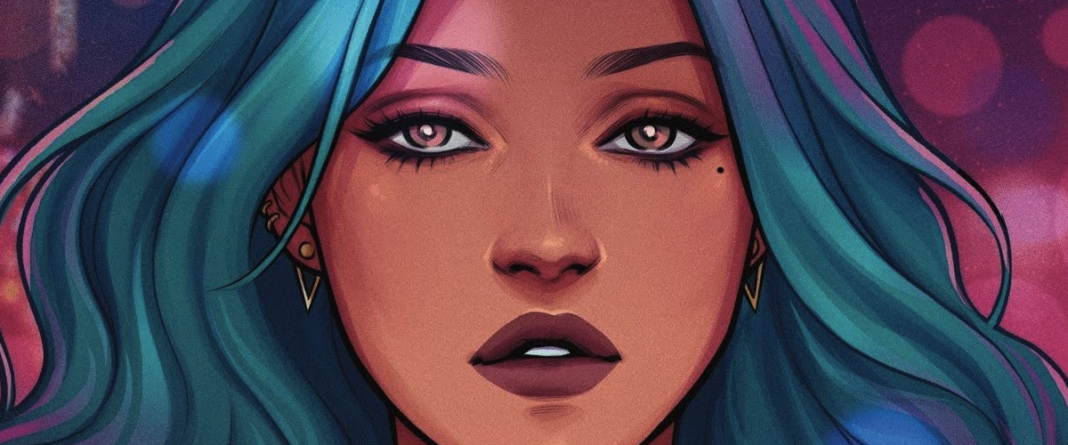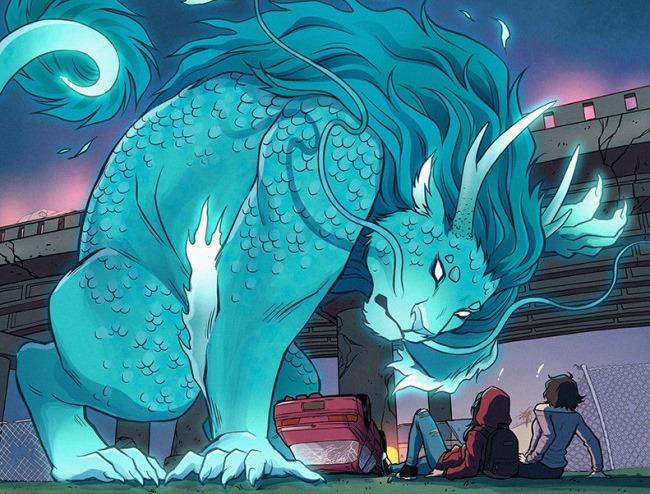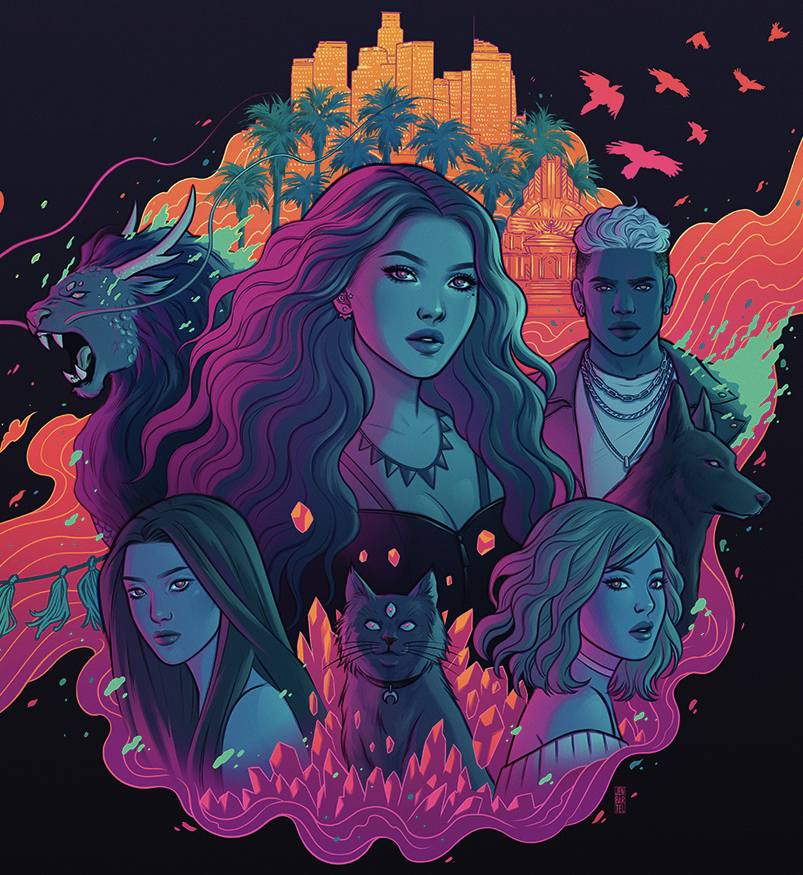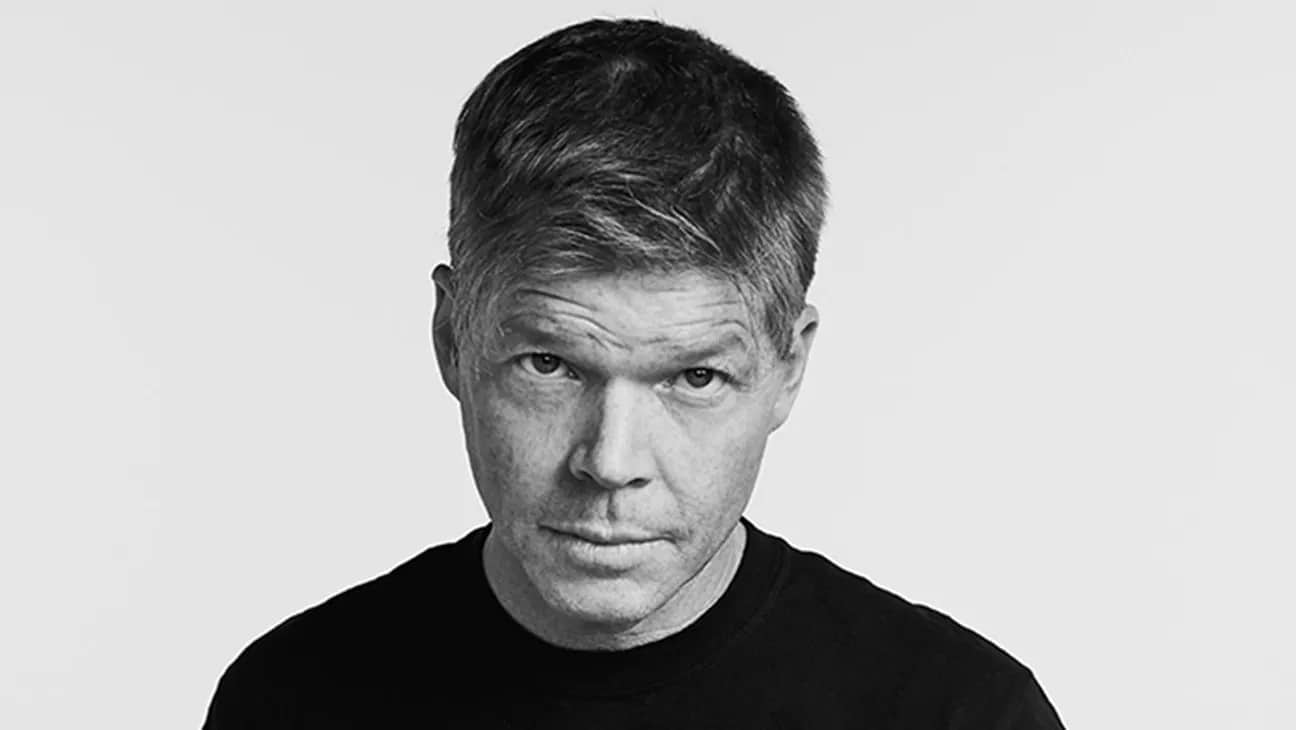On Thursday afternoon at San Diego Comicon the Beat got a chance to talk with superstar artist Jen Bartel about Blackbird, the story of Nina Rodriguez and her exploration of the magical world hidden just below the surface of Los Angeles. Blackbird is published by Image Comics, written by Sam Humphries, and features work by colorist Tríona Farrell (issues 2 – 6) and Nayoung Wilson (issue 1), layout artist Paul Reinwand, and letterer Jodi Wynne.
AVERY KAPLAN: Are there any specific influences you had for the monsters in Blackbird?
JEN BARTEL: Mostly I wanted to incorporate Asian mythology because I grew up in Korea. I think it’s common in most East Asian countries, but we all have different names for them – in Korea, they’re called haetae or haechi. But it’s basically like Chinese lion dogs. They have statues of them all through China and Korea, and I really wanted to incorporate that kind of imagery into it, so the big giant beast in Blackbird is heavily pulled from that.
KAPLAN: Were there any other influences for the magic?
BARTEL: For the magic, we talked a lot about how the whole system would work. Honestly, so much of the influence was pulled from Final Fantasy, and my love for JRPG… It definitely harkens back to the materia system in Final Fantasy VII with gems and inserting them into jewelry of some kind. It’s really my inner-RPG nerd that created that system.
We didn’t think out all of the details, but it was nice to have some kind of loose set of rules to refer back to. Because I do think it’s that sort of thing that you can fall into when you’re telling a story that involves magic or magic-users is you can explain everything away through magic, and like, “oh, it just works, you know.” We wanted to give it some limitations.
KAPLAN: What was the collaborative process like?
BARTEL: When we were first developing, it was a lot of long calls, or we would throw ideas back and forth. It was really just me and Sam, and it was very 50/50 – very split evenly. And we would just bounce things off each other and they naturally evolved to where they ended up.
KAPLAN: Was there anything that you had in mind that you really wanted in there from the beginning?
BARTEL: The only thing that I told Sam I wanted was an opportunity to draw the things that I knew I enjoy drawing. But as far as a request that I had for him… It was specifically about Nina, the protagonist.
When we started developing Blackbird in late 2016/early 2017, I feel like that was sort of the heart of all this conversation around the strong female character. And I love a strong female character type – I think it’s important that we have characters like Captain Marvel and Wonder Woman.
I wanted a complicated female character – I wanted a character who wasn’t just strong all the time and wasn’t perfect, and in fact, was very imperfect, and kind of a mess. So that’s something that I was very insistent on when I started working on it because I think that women should be allowed to be imperfect.
KAPLAN: What was the process of world-building for Blackbird like?
BARTEL: That was the other thing I told Sam: I wanted it to be based in reality, for the most part, because I didn’t feel confident in my world-building skills. This is the first book that I’d really drawn; I’d done a couple of issues of Jem and the Holograms before this, but that was all very built out for me, and Sophie Campbell’s designs and world-building were already very established and easy to work off of.
With this, I knew that it would be a much bigger challenge. I told him that I wanted to base it somewhere real that I could pull references from… That’s how we came to the decision to base it in LA. The only thing outside of that that I really had to come up with was the magic world, and with that, it was pulling a lot of influences from historic LA: lots of art deco inspiration, the architecture and stuff like that. It was very much based in reality, and I could pull from things that already existed. That was easier than just coming up with all of it from scratch!
KAPLAN: So was it predominantly pulling images of LA off the internet?
BARTEL: Well, when Sam and I were first working on it, I actually took a trip out there and we went around to different areas of the city. I took lots of videos and photos. A lot of the areas that Nina finds herself in are not your typical Hollywood – like, The Hills type of glamorous places.
She spends a lot of time in North Hollywood, and a lot of it feels much more lived-in and less picturesque – not exactly what you’d see on a reality TV show, and it’s harder to find references for those kinds of places. Basically, going there and getting reference images was really important.
It also helps that Sam is a current resident of LA and I was born in LA and spent my childhood there.
KAPLAN: Were there any other particular influences on Blackbird?
BARTEL: I definitely wanted to incorporate things that I liked from my own childhood. After my family moved from LA to Korea, I spent basically the time I was in first grade all the way through high school graduation there. So the majority of the media that I grew up with was manga and anime, so I wanted to incorporate as much of that as possible.
I think there’s a large part of the population that’s consuming comics today that also grew up with that content. So we try to put little Easter eggs and shout-outs to things. There’s a panel where we make a pretty funny Sailor Moon reference. Legally, they are none of those things. But I wanted to harken back to some of my favorites from when I was growing up, and most of it is coming from Asian media.
KAPLAN: How did you develop the various cabals in Blackbird?
BARTEL: That was all Sam because they’re all location-based. It was him pulling, I think, how LA culture sees those specific neighborhoods or, you know, counties, whatever you want to call them. So you have certain cabals that are very ostentatious, and when Sam and I were talking about that, he was like, “these are the people who would be in this cabal.” The cabal that Clint’s from he described as the “Kanye cabal.” I think a lot of it was just Sam riffing off how people in LA are already perceived in those areas.
KAPLAN: Can you talk a little bit about how color plays a role in Blackbird, and why it’s important to you?
BARTEL: Personally, I wouldn’t call myself a line artist or comic artist in the traditional sense of doing pencils and inks and then handing that stuff off to someone else to color. So finding a colorist who would really fit my style – not necessarily replicate exactly what I would do, but have it feel cohesive with the work that I regularly make – was quite a challenge.
I think a big reason I get hired to do covers is the colors, so I wanted to still be able to have that, but I knew that I wouldn’t be able to do the actual labor of it, just from a time and scheduling perspective.
When we got Tríona on the book, it was a match made in heaven. Triana had colored a couple of my covers before that. I had a good working relationship with her, but I wasn’t sure how it would work with interiors. She is just – she’s like a chameleon, I’ve seen her color some books that looked totally different from Blackbird, but it just fits the style of the line art so well.
KAPLAN: Is there any fantasy project or type of project that you would want to do?
BARTEL: Growing up, especially being a Final Fantasy fan… I used to draw those characters over and over and over and pore over their designs. I think it would be cool to do some character design or key art for a game.











Comments are closed.